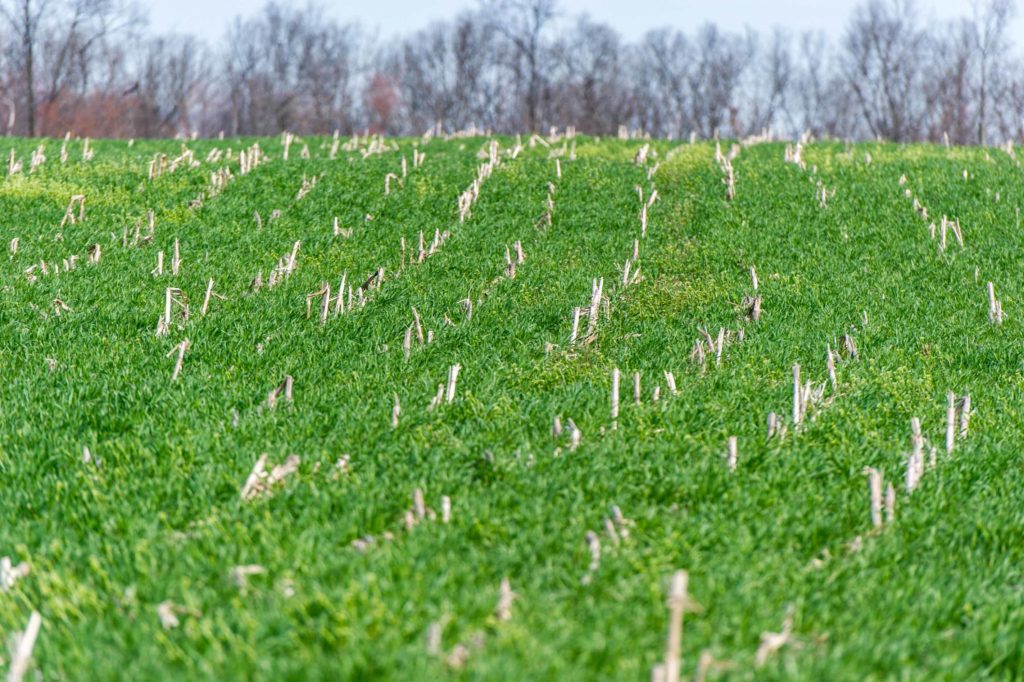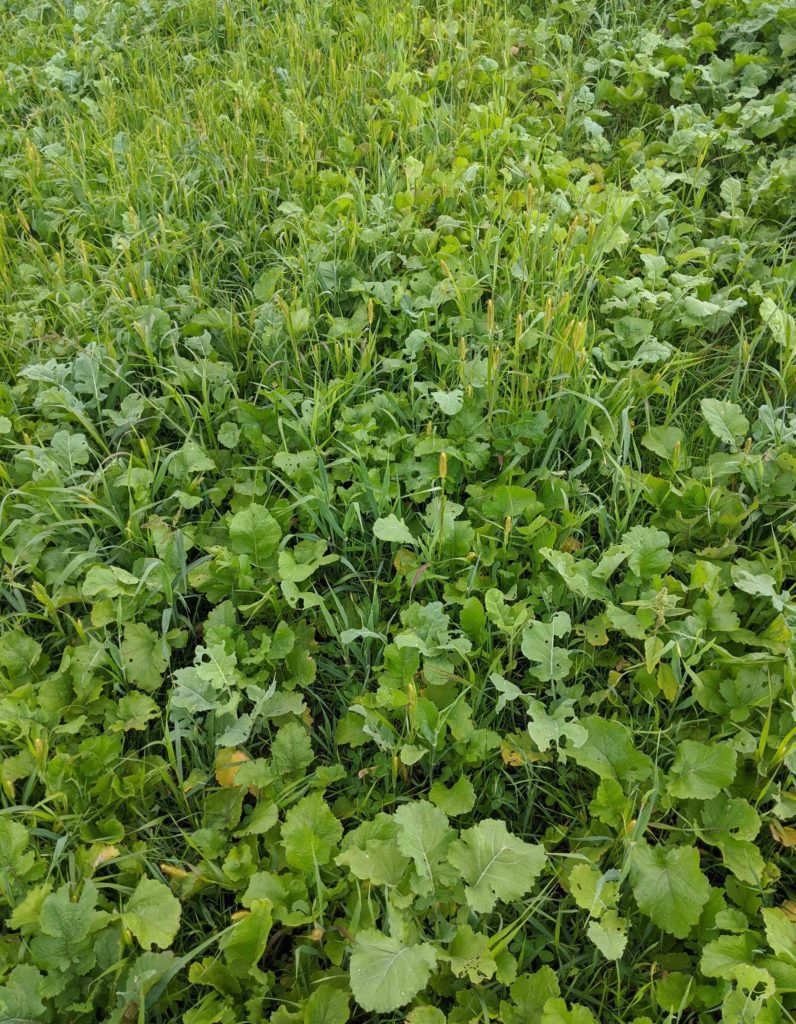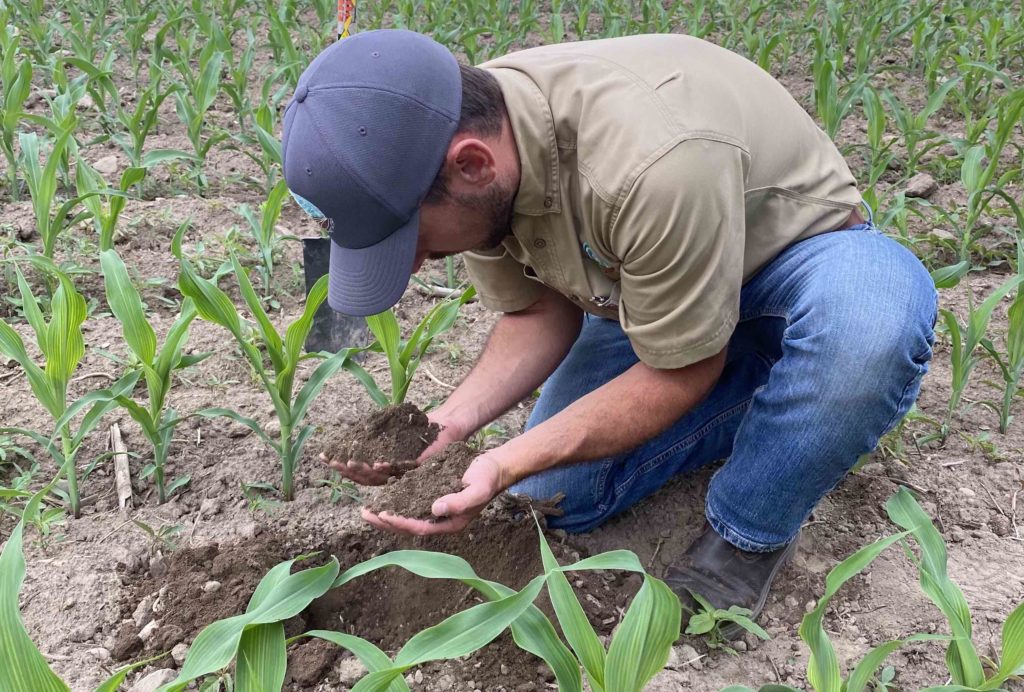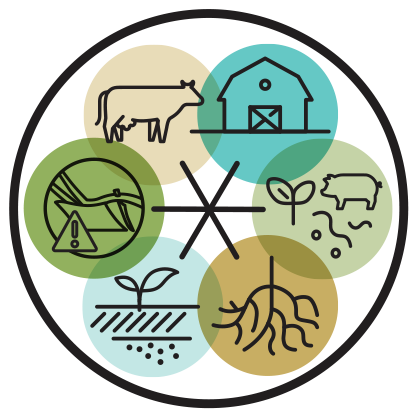Making soil health gains with your Prevent Plant acres


By Kent Solberg, Senior Technical Advisor & Jonathan Kilpatrick, Farmer Education Director
Recent rainfall events have prevented farms from completing corn and soybean planting. Decisions made in the next few days can have impacts not only for this cropping season, but for years to come. Some farmers are thinking about either short-season corn or soybeans, planting annual forages, or utilizing cover crops to prevent fallow syndrome in subsequent years.
For growers in the midst of making these urgent decisions, there are a number of considerations that can aid in determining which forage or cover crops may fit your context.
Consideration #1: Herbicide History
The first, and most important in a corn and soybean system, is the herbicide history over the past three growing seasons on any particular field.
Herbicide rotation restrictions will determine what may be used as a forage or cover crop. In general, pre-emergent soybean herbicides have some of the longest rotation restrictions. Restrictions change over time, so it is important to check the label for each product used. Too many cover crop train wrecks could have been avoided by checking rotation restrictions on all herbicide products applied to a particular field over the past three growing seasons.
If not confined by herbicide rotation restrictions, a multi-species cover crop blend can provide some of the greatest benefits to your soil. Ideally, these blends would include one or more grasses, legumes and a broadleaf or forb. Building soil aggregate structure with diverse cover crop blends can help address compaction that can lead to water ponding and erosion.

Consideration #2: Your farm goals
Next, determine your goals for the prevent plant seeding. You may find it helpful to ask yourself the following questions to clearly identify what you want to achieve:
- Will the seeding be used for forage? How will the forage be harvested and stored?
- Am I looking to:
- minimize erosion?
- prevent fallow syndrome?
- build soil aggregate structure?
- adjust the carbon:nitrogen ratio?
- break pest cycles?
- cycle nutrients?
- What type of equipment do I have access to for seeding?
- If I am hiring out the field work, when are they available?
- Is there enough latitude in the rotation restrictions for a multi-species cover crop?
- What is the plan for next season?
- How will I terminate the cover crop?
Consideration #3: Context and climate of covers

Cover crops are an investment in soil health and the future of your farm. Three of the principles of soil health are living root, armor, and diversity. Cover crops are crops that are not typically thought about as a cash crop as soybeans and corn are, but many farmers are finding that cover crops allow opportunities for grazing (integrating livestock is another principle of soil health!), forage harvest, or just building up the soil. By planting a cover crop instead of leaving your ground un-planted, you are keeping the soil covered, a living root growing, and adding some diversity of different plant species. Following these principles will lead to a healthier soil that is less reliant on costly inputs.
When shopping for cover crop seed, the sales team should ask about your field, its management history, crop rotation and your goals. A number of companies offer pre-mixed blends. While pre-mixes may appear easy on the surface, understanding the context of your field and your goals before purchasing any cover crop seed will help ensure the greatest degree of success when selecting cover crops.
Remember, broadcast seed rates are higher than drilled rates. A benefit of farming in a northern climate like Minnesota is that we can use cold weather to terminate covers. Warm season annuals are highly vulnerable to freezing temperatures negating the need for other termination methods. If the plan is to plant soybeans next season, be careful selecting legumes as a cover crop. Keep total brassica (radish, turnip, kale) amounts under 2 lbs. per acre.
An opportunity in disguise
Prevent Plant conditions can be an opportunity to turn lemons into lemonade for your farm. A little research and careful thought can go a long way in getting the most out of less-than-ideal conditions. As always, if you have any questions about cover crops, soil health, and options for your prevent plant acres, feel free to reach out to our consulting team.
Jonathan Kilpatrick: jonathan@sfa-mn.org or 844.922.5573 Ext. 712



Great article . Can you explain more about the caution of planting brassicas this year if soybeans are planned for next year?
Hi Larry-
I’ll try to explain it as simply as I can. The caution with planting brassicas has to do with carbon:nitrogen ratios. One of the reasons that typically find corn and soybeans in alternating years in a cropping system is that corn is a high carbon crop and soybeans are a low carbon crop. The nitrogen produced from the soybeans helps to feed next years corn crop and break down last years corn residue. Since soybeans are a legume, planting brassicas (or too many brassicas) the year before a legume crop without enough carbon present in the system can cycle too much nitrogen into the soil, causing soil aggregate to collapse. Nitrogen is always hunting for carbon molecules to bind to, and if there isn’t enough present, it will actually start to break down soil aggregate and “eat” the carbon out of our soils, reducing the organic matter content. Hope that makes sense, feel free to follow-up if you have more questions!